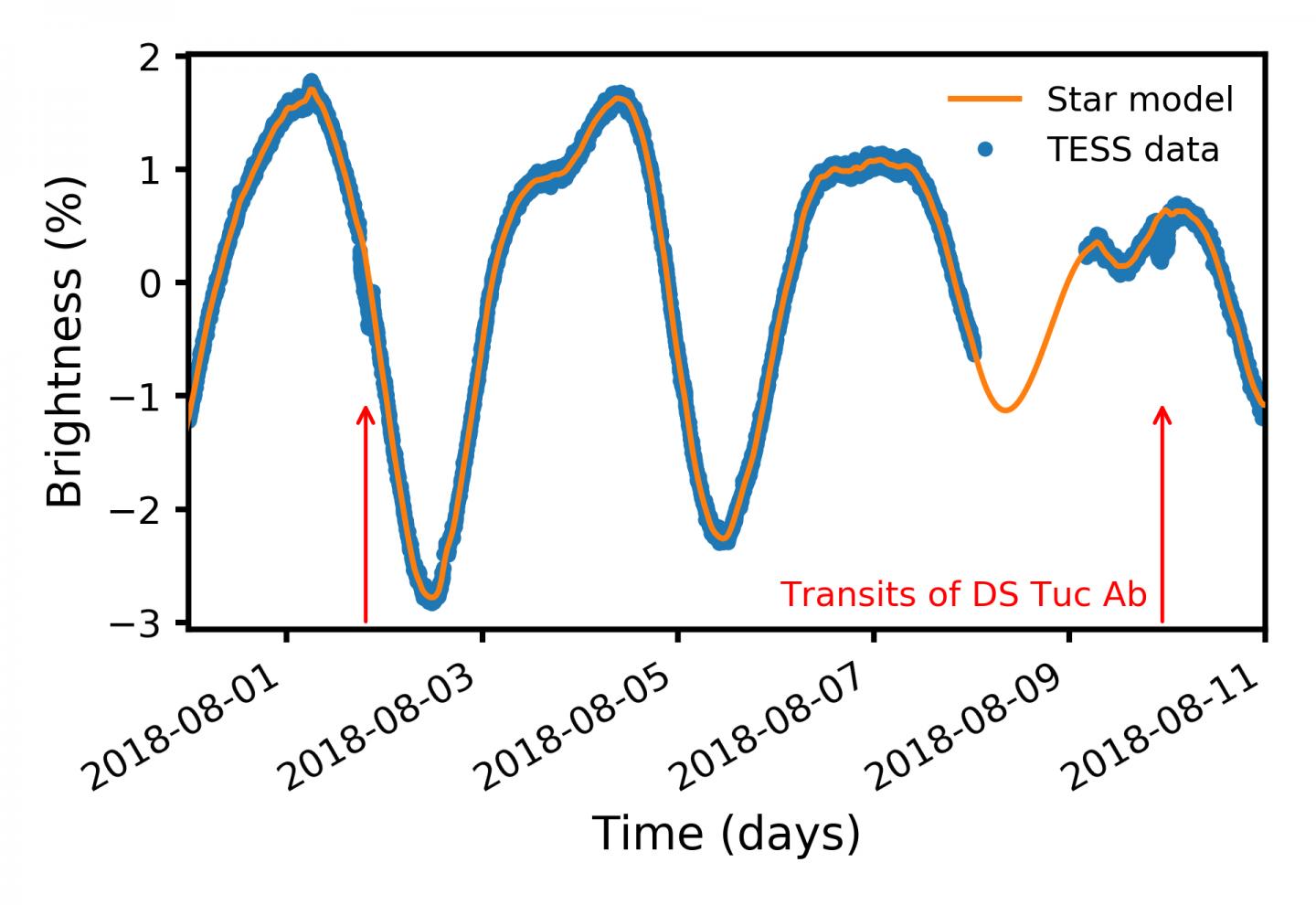Using NASA’s planet-hunting satellite TESS (Transiting Exoplanet Survey Satellite) a group of astronomers spotted a baby gas giant as it’s being formed. Observation of star and planetary formation can help scientists understand a little more about how our own solar system formed.
A baby gas giant that scientists call DS Tuc Ab is forming in orbit around the star called DS Tuc located 151 light-years from Earth in the constellation of Tucana (the toucan) after which it was named. Given it’s a gas giant, DS Tuc Ab is six times the size of Earth which sorts it into the planetary size ranging between Saturn and Neptune. Its size also tells researchers that it’s fairly similar to the planets found in our own star system.
The discovery of a baby gas giant as it’s forming gives scientists a lot of insight into planetary formation, explaining how planets grow. The newly-discovered exoplanet looks like a “pre-teen” in planetary terms. The study published in the journal Astrophysical Journal Letters talks about the young exoplanets as “snapshots of the planetary evolution process.” These baby exoplanets show how planets transit, and how they change throughout their evolutionary process.
Many scientists theorize that the vast majority of planets have a chaotic formation system, and that they start developing as larger than they are after their “full growth.” Throughout their growing process they change and shrink in size over time. In the growing process, planets also lose their atmospheres which vastly contribute to the change in their size, especially the gas giants.
“One of the overall goals of astronomy is understanding the big picture of how we got here, how solar systems and galaxies take shape and why,” Dr. Elisabeth Newton, an astronomer at Dartmouth College, said in a statement. “By finding solar systems that are different from our own — especially young ones — we can hope to learn why Earth and our own Solar System evolved in the ways that they did.”
The newly-discovered baby gas giant is at the point of growth where it’ll no longer grow larger, but lose its atmosphere instead, the scientists explain. Scientists see these changes occurring relatively rapidly, which is why the discovery of DS Tuc Ab gives so much insight into planetary evolution. The reason this exoplanet is losing its atmosphere is because it’s located too close to its star which causes a loss of atmosphere due to the radiation. Earlier this year, a study has shown that planets, gas giants in particular, form at a farther distant location in the solar system and approach their host stars in the process of development.
“We were really excited when we confirmed this discovery because the planet orbits such a bright, well-known young star,” Dr. Newton said. “We hope that by seeing this planet’s atmosphere, we can provide a snapshot of what planets look like at a young age.”





